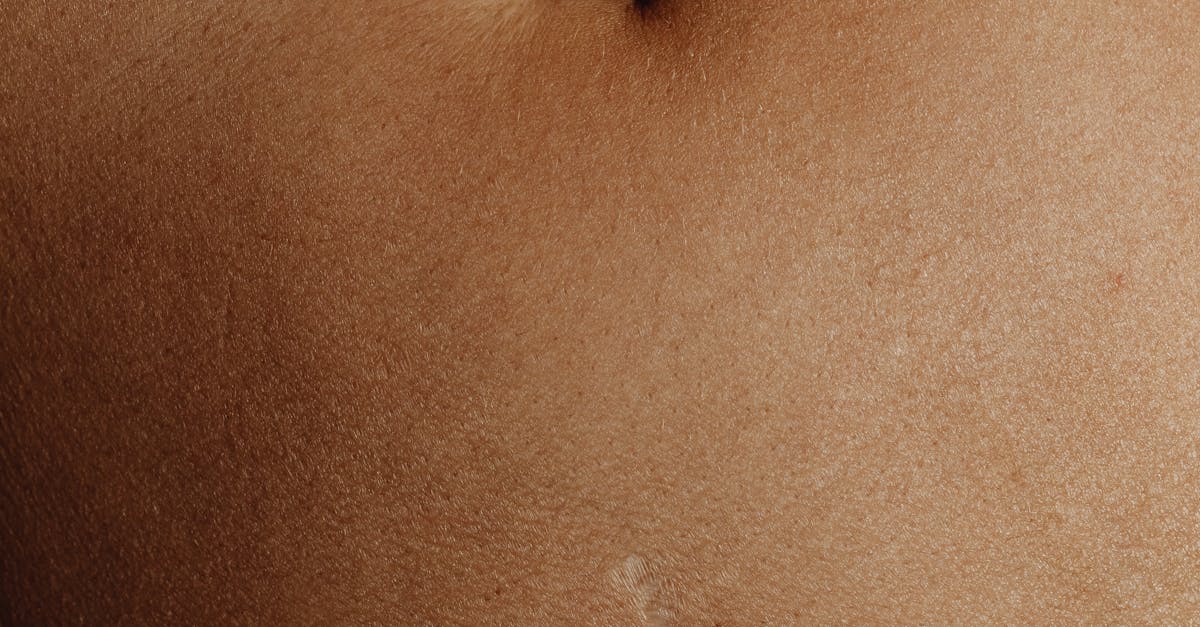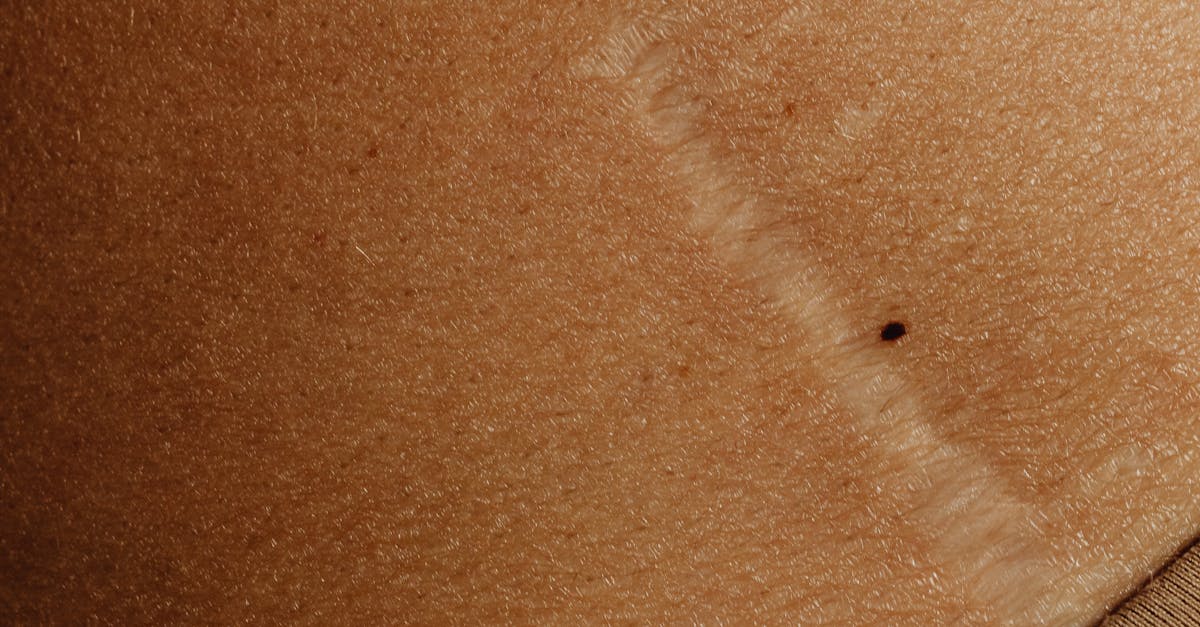
At nycosmeticsurgery.net, our expert cosmetic surgeons specialize in scar revision procedures. Whether you have scars from previous surgeries, injuries, acne, or other conditions, our skilled professionals can help minimize their appearance and improve the overall texture and tone of your skin. Using advanced techniques and cutting-edge technology, we are able to smooth out scars and achieve more natural-looking results. Our personalized approach ensures that each patient receives customized treatment options tailored to their unique needs and goals. Trust nycosmeticsurgery.net to help you regain confidence and feel better about your skin with our scar revision services.
Specialized Care for Keloid Scars
Specialized care for keloid scars is crucial in providing patients with the best possible outcomes. When treating keloids, it is essential for the surgeon to have a deep understanding of the unique characteristics of keloid scars compared to other types of scarring. Keloids extend beyond the boundaries of the original wound and result from an overproduction of collagen during the healing process.
Treatment options for keloid revision may include various surgical techniques such as z-plasty, skin grafts, or flaps. These procedures are aimed at reducing the size and appearance of the keloid, although it is important to note that keloids may recur even after treatment. In some cases, a combination of treatments such as lasers, dermabrasion, or steroid injections may be recommended to address keloid scars effectively. By tailoring the approach to each patient's unique situation, plastic surgeons can help minimize the impact of keloid scars on their patients’ lives.
Treatment Options for Keloid Revision
Keloids are raised scars that form due to an abnormal response to skin trauma. Treatment options for keloid revision include excision, cryotherapy, intralesional corticosteroid injections, laser therapy, and silicone gel sheeting. Excision involves surgically removing the keloid and can be followed by post-operative measures to prevent recurrence. Cryotherapy, which involves freezing the keloid with liquid nitrogen, is effective in reducing the size and thickness of the scar. Intralesional corticosteroid injections can help decrease inflammation and itching associated with keloids. Laser therapy targets the blood vessels that supply the keloid, leading to a reduction in its size and symptoms. Silicone gel sheeting is a non-invasive option that can help flatten and soften the scar over time.
In some cases, physicians may recommend fat grafting or collagen injections to fill in depressed keloids and improve their appearance. These procedures involve transferring fat or collagen into the scar tissue to elevate it to the level of the surrounding skin. It is essential to consult with a qualified cosmetic surgeon to determine the most suitable treatment option for individual keloid scars based on their size, location, and characteristics. Patients should be aware of the potential risks and complications associated with keloid revision procedures, including hyperpigmentation, itching, swelling, ischemia, and the development of new keloids. Close monitoring during the post-operative period is crucial to ensure proper healing of the skin and to address any adverse effects promptly.
Potential Risks and Complications
Potential risks and complications may arise following scar revision procedures, though they are relatively uncommon. Infections at the surgical site can occur, leading to redness, swelling, and increased pain. It is crucial for patients to follow post-operative care instructions diligently to minimize the risk of infection and aid in optimal healing. Additionally, adverse reactions to anesthesia, such as allergic reactions or respiratory issues, are possible but rare. Patients should disclose their complete medical history and any allergies to their healthcare provider before undergoing any surgical procedure to mitigate these risks.
Another potential complication of scar revision is the development of hypertrophic scars or keloids, especially in predisposed individuals. These types of scars are raised, thickened, and can extend beyond the boundaries of the original scar. Patients with a history of abnormal scarring should discuss this risk with their surgeon before undergoing any revision procedure. Furthermore, changes in skin pigmentation, such as hyperpigmentation or hypopigmentation, may occur following scar revision. Proper sun protection and diligent follow-up with the healthcare provider can help manage these complications effectively.
Adverse Effects of Scar Revision Procedures
Adverse effects of scar revision procedures can vary depending on the individual's healing process and the techniques used during the surgery. One common adverse effect is skin irritation, which may result from the body's natural response to the surgical intervention. Epithelialization, the process of new skin growth over the wound site, can sometimes lead to discomfort and itching. Additionally, wound contraction, where the edges of the incision pull together during healing, can cause tension and discomfort in the skin surrounding the scar area.
Complications related to scar revision procedures may include issues within the dermal layer, where the underlying tissue is affected. Scar tissue that forms post-surgery can sometimes become raised or thickened, leading to aesthetic concerns for patients. In some cases, further intervention such as skin grafts or dermal fillers may be necessary to address these complications effectively. Plastic surgeons specializing in scar revision will carefully assess the risk of adverse reactions and pro-inflammatory responses to minimize such complications during the healing process.
PostOperative Recovery Guidelines
Post-operative recovery following scar revision procedures is a crucial phase that requires strict adherence to post-operative guidelines for optimal results. It is essential to follow the surgeon's specific instructions carefully to ensure proper healing and minimize the risk of complications. Patients should maintain good wound care practices, including keeping the incision site clean and dry, as well as changing dressings as recommended by the healthcare provider to prevent infection and promote healing.
Another crucial aspect of post-operative recovery is managing pain and discomfort effectively. Patients are typically prescribed pain medications to alleviate any post-operative pain. It is important to take these medications as instructed by the healthcare provider and report any concerns or issues promptly. Additionally, avoiding strenuous activities and following the recommended activity restrictions are vital to prevent any strain on the surgical site and facilitate the healing process. By adhering to these post-operative recovery guidelines diligently, patients can enhance their recovery experience and achieve desirable aesthetic outcomes.
Specific Instructions for Scar Healing
Specific instructions for scar healing are crucial to ensure optimal outcomes post-surgery. Following the procedure, patients must adhere to a strict regimen for wound care and maintenance. Keeping the area clean and dry is paramount to prevent infection. Patients should avoid exposing the scar to direct sunlight and should use sunscreen as advised by their healthcare provider to protect the healing tissue.
It is essential to follow the specific guidelines provided by the healthcare team for proper scar healing. Regular application of silicone gels or sheets may be recommended to promote scar fading and softening. Patients should also avoid picking at scabs or scratching the surgical site to prevent irritation and potential scarring. Proper communication with healthcare providers regarding any concerns or adverse reactions is imperative for successful scar revision healing.
FAQS
What is scar revision?
Scar revision is a surgical procedure aimed at minimizing the appearance of scars, improving their texture, and enhancing overall skin appearance.
Who is a candidate for scar revision?
Candidates for scar revision include individuals with scars that are raised, discolored, or have an irregular shape, which may be a result of trauma, surgery, or skin conditions.
What are the different treatment options for keloid scar revision?
Treatment options for keloid scar revision may include surgical excision, laser therapy, steroid injections, silicone gel sheets, and pressure dressings, depending on the size and severity of the keloid.
Are there any risks or complications associated with scar revision procedures?
Yes, potential risks and complications of scar revision procedures may include infection, excessive bleeding, hypertrophic scarring, changes in skin pigmentation, and allergic reactions to medications or materials used during the procedure.
How long does it take to recover from scar revision surgery?
The post-operative recovery period for scar revision surgery varies depending on the type of procedure performed and the individual's healing process. It is essential to follow specific post-operative recovery guidelines provided by your healthcare provider to ensure optimal healing and results.


